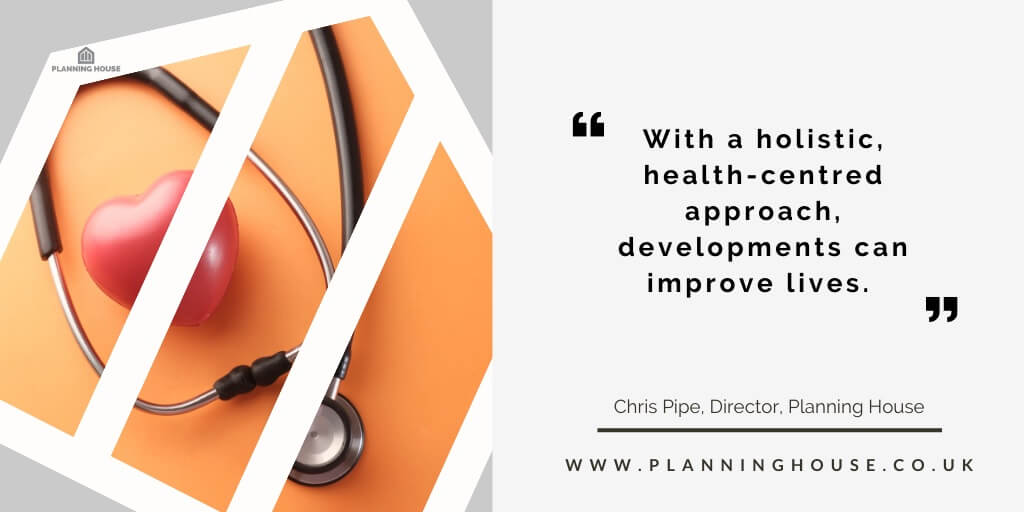As town planners seeking to create sustainable communities, our work has the potential to meaningfully support our country’s health services for years to come. Through intentional town planning that considers health needs and assets, the town planning industry can help build happier, healthier neighbourhoods for all.
Health is about so much more than just doctors’ offices and hospitals. Where we live, work and play impacts our well-being every day in big ways and small. Things like walkable streets, access to nature, local services and strong social connections all make staying well easier.
This is where visionary developers and town planners have a chance to lead. By factoring health implications into every phase of planning—from selecting a site to designing street layouts—proposals can efficiently allocate space and resources to promote wellness. A few strategic decisions upfront save NHS pounds down the line through prevention instead of cure.
Put Wellness at the Centre
Make health a guiding principle equal to other priorities like transport, housing and employment from the start. Conduct a community health impact assessment to understand local needs and assets. Then design with prevention and social connection in mind.
A structured assessment of potential impacts, known as a health impact assessment (HIA), helps ensure these important factors are not overlooked in policies and development proposals. HIAs are most advantageous when conducted early, allowing findings to genuinely inform project design before firm plans are in place. By proactively evaluating health determinants and outcomes, decision-makers gain insight to maximize positive impacts and mitigate risks to community health from the start. A thorough HIA provides an evidence base for designing developments and neighbourhoods that foster wellness from inception.
For example, locate new medical facilities nearby but not all in one area, dispersing services through mixed-use centres. Focus commercial zones along active transportation routes to parks and leisure amenities. Provide open, naturally lit indoor and outdoor communal spaces to support mental wellbeing.
Plan for All Ages and Abilities
An age-friendly community benefits everyone. Incorporate principles from the WHO Global Network of Age-friendly Cities and Communities to ensure safe, barrier-free mobility and participation for those with limited mobility.
Wide, well-lit footpaths and safe crossing points make independent living possible as we age. Ground-floor retail and services eliminate stairs. Well-spaced seating, toilets and shaded areas along footpaths expand access to nature.
Leverage Green Infrastructure
Green spaces reduce stress while encouraging exercise integral to prevention. Accentuate natural features and waterways to maximize recreational and mental health value. Incorporate tree canopies along active routes to moderate temperatures, absorb pollution and beautify neighbourhoods.
Connecting conservation areas, community gardens, and multi-use greenspaces with a comprehensive trail network allows residents to easily incorporate incidental activity into daily life at every ability level. Many councils now require developers to provide open space within developments proportional to project size, or contribute to improving nearby space.
Partner with Health Stakeholders
Local clinicians, social services and charities have a unique understanding of the community. By collaborating from the start, developers and town planners gain grassroots support while health experts ensure proposals align with strategic plans and funding priorities.
With a holistic, health-centred approach, developments can improve lives. If we plan for wellness together, every new home can nurture not just shelter but also the strength, connections and peace of mind that makes every community healthier for generations to come. The opportunities are ours to shape—let’s make the most of them.
Related Content
You might also find our article Mental Health and Town Planning of interest.
More information for you is available in our series of eBooks and Practical Guides which cover everything from the very basics of town planning to application processes and what developers need to consider.


